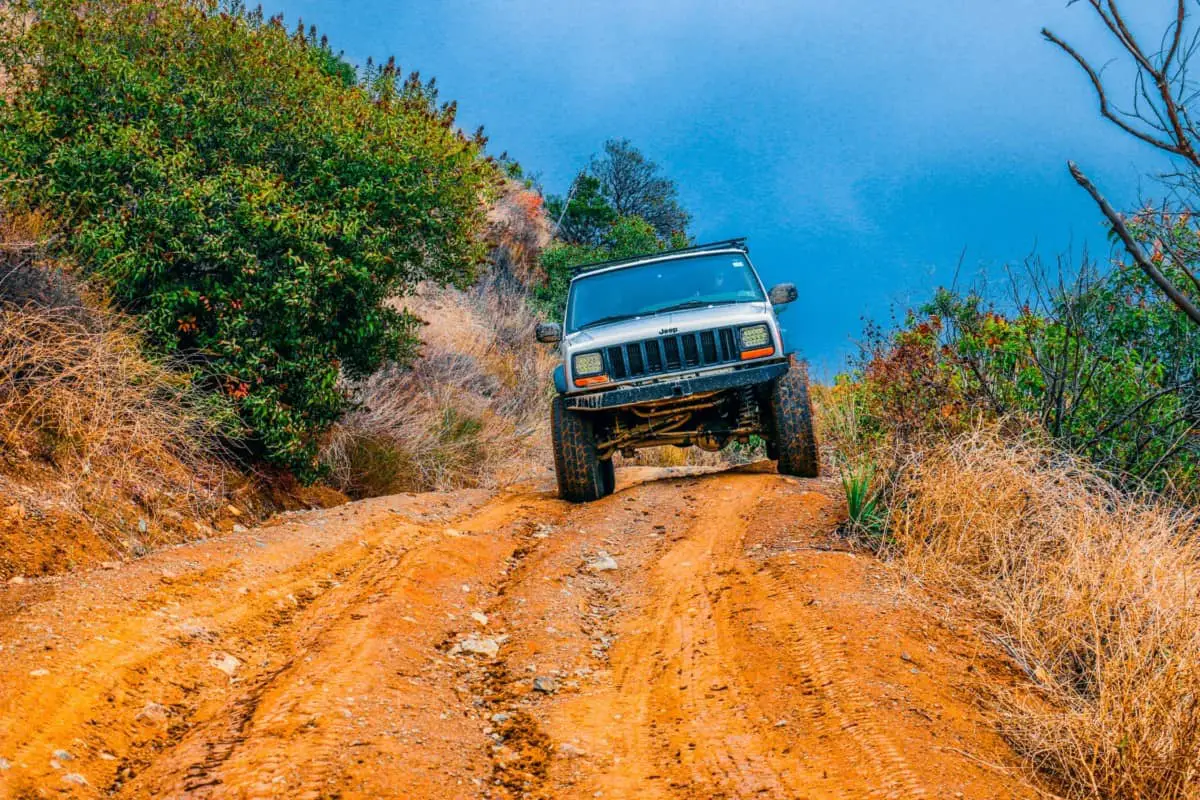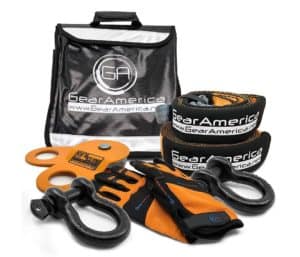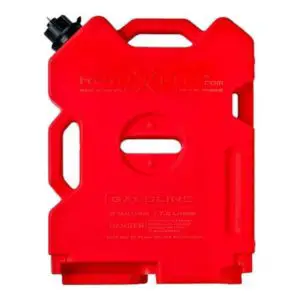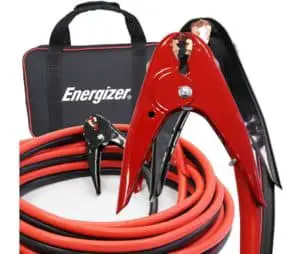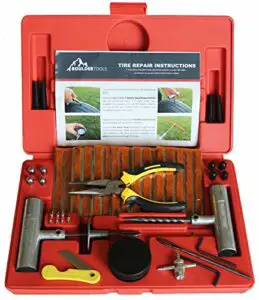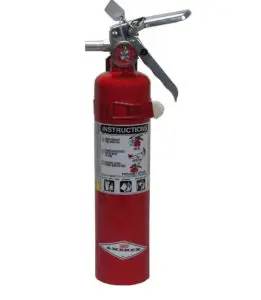Driving off-road and exploring the unknown can be an amazing experience and opportunity for some treasured memories. However, if you go blindly into it without properly preparing yourself, you can end up in a nightmare and ruin your experience for good.
So how exactly do you drive off-road or go off-roading? Off-roading safely is ultimately a matter of driver operation over equipment capabilities. You don’t need the biggest baddest vehicle but rather a cautious mindset and a willingness to learn. With some easy basic knowledge of physics, anyone can venture into the unknown and make it home safe.
While this is easy to say and tell people, below we are going to dive into some details about how exactly to apply these principles and explain exactly what kind of physics one might need to understand. Check it out!
The Six P’s to Success
The six P’s to success is not only for off-roading but for almost any aspect of life. Growing up, my Dad had so many little phrases and sayings he would tell us all the time. Quick little one-liners that packed a powerful punch. One of those sayings was ‘The Six P’s’.
Proper Prior Planning Prevents Poor Performance. That’s it.
It doesn’t take a rocket scientist to dissect this phrase and tell you what it means. It’s pretty straight forward. But, just in case it’s not, let’s dive in and make sure we cover all the bases.
The first word, proper, is actually very important. There is another phrase that says ‘practice makes perfect’. The truth is, perfect practice makes perfect. The same goes for planning. You can plan all day and night and still not be prepared. But proper planning for your specific need and venture will ensure that you have what you need.
Prior planning is the keyword for all you procrastinators out there. Don’t wait till the morning of your off-road adventure to start planning what you need to take and have for a successful trip. No exaggeration, I often start planning what I need to take at minimum a week before. For some this extreme but for many it’s standard. For bigger trips, you often need several weeks if not months to plan properly.
The rest of the phrase kind of bleeds together. However, let’s not overlook the most important word of all…PLANNING. At a minimum, have some kind of plan. Period. Whether you took weeks or minutes to develop it, don’t go in blind. Put something together.
By following the first three words in the phrase you save yourself from the last three.
Nothing is worse than getting out in the middle of nowhere and realizing you either don’t know where you are because you didn’t get a map of the trail or you have a flat and didn’t make sure your spare was in good shape.
The outcomes are endless when it comes to things that could happen on the trail. But you’d be surprised at the situations experienced off-roaders have overcome by having a well thought out plan and course of action before their trip.
Some of you might be thinking, “This is one of those articles that offers cheap advice and cliche sayings but no real advice.” That couldn’t be farther from the truth.
DO NOT IGNORE THIS STEP.
Take it to heart. It’s first on my list because I think it is most important. Apply it to anything in life and you’ll thank yourself later.
Understanding Your Vehicle
By no means are all off-roading vehicles Jeeps and by no means do all Jeeps behave the same on or off-road. Whatever you drive there are some basics about your vehicle you need to understand before hitting the trail.
Drive Train
If you are just getting into the off-road scene, then are some basics you should understand about the car you plan on getting or currently have. Probably the most important component you need to have a solid understanding of is your drivetrain.
Your drivetrain is what takes the power of your engine and actually sends it to the wheels to make you move. There are several components that make up the entirety of your drive train but we won’t get into that here.
The most common ways drive trains are described are as follows: two-wheel drive, four-wheel drive, and all-wheel drive.
While these sound pretty straight forward, there are some technicalities that are important to understand so you can truly know what your vehicle is capable of.
We’ll start with the most common system which is a two-wheel drive or 2WD. Most cars or non-off-road vehicles are usually equipped with some form of 2WD whether that be front-wheel drive (power sent to the front wheels) or rear-wheel drive (power is sent to the rear).
We won’t dwell on this drive train setup for long because there isn’t much use or desire for it in off-roading. If you have a 2WD vehicle, you can manage to travel some well-maintained dirt roads or gravel in ideal conditions.
But to really hit the trails, I would suggest investing in one of the other options. Two-wheel drive vehicles don’t often provide the traction and power distribution that is coveted on dirt or rocks.
Next, let’s dive into the all-wheel-drive setup aka AWD. Now your first instinct might be two think, “There are usually four wheels on a vehicle, so all-wheel-drive must be the same as four-wheel drive.”
This is a reasonable train of thought but it is in fact wrong. An AWD vehicle does not have a selectable transfer case. This means that you have one set of gears delivering power to the front and rear wheels in a 50/50 manner that varies depending on which wheels have/need traction.
Still have questions? Check this out.
The most common vehicles you’ll find with AWD are usually smaller SUVs or cross-overs. These vehicles make good daily drivers and can help in bad weather.
Ultimately, in an all-wheel-drive vehicle, you can hit some minor trails pretty easily but should not exceed anything with a trail rating greater than two. To understand the trail rating system check out our How to Get Your Jeep Badge of Honor article and look for the section “Understanding Trail Ratings.”
Lastly, we have the gem of the off-road community…the four-wheel drive, or 4WD, drive train setup.
Four-wheel drive vehicles have a transfer case that is capable of delivering power to the wheels in two different gear ratios (unlike all-wheel drive). This is known as 4WD High and 4WD Low.
For most trails, you use 4WD Low. In this setup, your mindset should be SLOW. You won’t want to exceed anything over 15-20 mph. 4WD High is more commonly used in a similar environment as an AWD drive vehicle.
If you have mud or snow on the road or you are a sloppy dirt road, 4 High give you better traction and distribution than just 2WD.
Some vehicles have a full-time 4WD setup that allows for daily driving on the pavement by allowing there to still be ‘slip’ in the differential for turning and such. Otherwise, you would tear your axle shafts and components apart.
Part-time 4WD vehicles mostly operate in 2WD until you, the driver, select to change over into four-wheel drive.
Four-wheel drive works by applying power to the front and rear at the same ratio. However, with an open differential, the tire with the least amount of traction gets the most power.
This is not ideal when off-road as you want all tires to have equal power. That is where lockers come in handy and what we will address in the following sections.
Now that you have a solid understanding of the different drive train setups, make sure to find out what your vehicle has or what the vehicle you want has and plan accordingly.
If you are seeking to buy an off-road vehicle, I obviously suggest and strongly encourage you to find a part-time 4WD. You’ll have a greater range of control and many more options when hitting the trails.
Wheelbase
The next thing I want to bring up and discuss doesn’t need as much explanation as to the drive train topic but it is still key to choosing the right vehicle for your specific off-road needs.
In understanding your vehicle and how it will behave on the trails, you need to know what your wheelbase is.
Your wheels base is exactly what it sounds like, the length (base) given from your front wheels to your back wheels. But why is it important in knowing how to drive off-road?
It shouldn’t surprise you that a short wheelbase vehicle is pretty coveted in the off-road world. If you look at the most famous and “original” vehicle developed for this purpose, the two-door Jeep Wrangler, you’ll see that it is a pretty small vehicle.
Short wheelbases allow for tight maneuvers and relatively easy control on tight trails and mountain switchbacks.
However, that’s not to say that the two-door Wrangler is perfect. In fact, a lot of enthusiasts stretch the Wrangler wheelbase to be a bit longer.
What you need to understand is that with longer wheelbases comes pros and cons. We’ll discuss angles, like approach and departure, later on. But to keep it to the point now, know that your angles and driving behavior will be very different based on the length of your wheelbase.
While shorter wheelbases seem to have better trail control, longer wheelbases make amazing overlanders and also have their unique rock crawling advantages.
To say short or long is right or wrong isn’t really the right approach. The important thing is to understand what you have and how it affects your driving style and the way you approach your off-road obstacles.
So before you go hard out in the wilderness, take some time to get a good feel for how your vehicle handles over obstacles and trails that are pretty mild. Learn to be comfortable maneuvering whatever rig you have.
Lockers and Traction Control
Lockers are an amazing tool for the off-road community. Sometimes, however, they can provide a false sense of confidence to those who might not understand them.
What I want to explain here is what lockers are, how they work, and why they are beneficial off-road.
Most vehicles, not all, don’t come stock with locking differentials. So if you plan to become an off-road enthusiast, you might be prepared to spend some money down the road.
But first, what are lockers? Better yet, what are differentials?
Inside your axle housing, you usually have an axle shaft that is split into two pieces. One piece feeds in from driver side tire and the other from passenger side tire.
These axle shafts meet in the middle at your differential. Most stock vehicles have what is called an open differential.
To understand this simply, picture a Jeep sitting on the ground with only the front end jacked off the ground with the tires suspended in the air.
If you went and spun the driver side tire, it would spin but the passenger wouldn’t and visa versa. This is due to the open differential.
Now, this can be a problem, and often is, when you get stuck on the trail. What happens, if your engine ends up sending all its power to the wheel that isn’t stuck.
This does you no good because you have a wheel with little traction getting all the power. Meanwhile, the wheel that is stuck is getting almost nothing.
So what a locker does, is it comes in and takes your open differential and locks everything together which sends an equal amount of power to all wheels. So when you get stuck, the stuck wheel is still getting power to get unstuck.
It’s important to note, that you don’t want permanently locked differentials. Not only is it strenuous on your axle components, but it also makes steering impossible.
Check out this video to truly understand the functioning of a locked differential vs an open differential.
Now that you understand what lockers are and how they work, you are better set to conquer off-road mayhem.
Lockers are not 100% necessary. In fact, you oftentimes are a smarter driver when you don’t have them. However, they are an amazing tool and convenience and you should highly consider the investment if you end up diving into this world of trail running, over landing, and rock crawling.
Before we move on, I want to address what some of you might be thinking and that is, “So what’s traction control?”
Many, if not most, newer vehicles come straight from the factory with what they call traction control. If you have this feature, there is usually a simple button you press that turns it on and off. But what is it?
In simple terms, traction control is the computer in your car monitoring the traction of each tire and applying the brake or removing power to wheels that lose traction.
Traction control is not the same as having lockers. This function is mostly for on-road conditions where traction can be lost from slippery conditions. It can help prevent hydroplaning and spin-outs.
The downfall to traction control is that you actually have to at some point lose traction in order for it to kick in.
While lockers ensure that all tires are spinning the same and receiving equal power, traction control is simply removing power or braking the tires that lose traction.
The point here is simple. Don’t assume you have locking differentials just because you see a button called traction control.
Like we covered, most vehicles don’t come with lockers but on the other hand, most new vehicles do come with traction control. Still helpful, but not the same.
Weight
The last thing I want to address in this section is the weight of your vehicle. It should be pretty common sense that pretty much no two vehicles are going to weigh the exact same.
While there are several reasons to aim to keep your vehicle light as you can, I mainly want to address the impact of weight out on the trail.
Depending on what kind of suspension you have, weight can play a major part in ride quality and performance.
For instance, if you look at well built over-landing vehicles, there is a ton of extra weight that factory suspension couldn’t handle well. In order to compensate for that, those vehicles have altered suspension that if often “stiffer” to compensate for that weight.
When fully loaded, the stiffer suspension offers a great ride and can support all the extra cargo, people, or aftermarket parts. But if you unload the vehicle, you’ll notice you have terrible ride quality.
While the suspension is an entire topic and post in and of itself, the biggest thing I want to bring to light is the fact that weight matters when off-roading.
Be mindful of your vehicle weight and do the proper research on how you should compensate for it when off-roading.
Let’s move on to angles.
Approach, Departure, and Breakover Angles
I won’t lie to you and say that you don’t need to know physics and math in the off-road world. In fact, go spend some time watching a fabricator design and make aftermarket parts and you’ll quickly see how well many of them understand these principles.
What I will say is that you don’t have to be a master in the world of physics and such. To be successful off-roading you’ll need to understand a few base things. One of the most important is the angles involved. Just some simple geometry is all.
Approach Angle
What is the approach angle? If you were you sitting in your car on a flat surface and drove up to a ramp/obstacle, the approach angle of your vehicle is the maximum angle from the bottom of your tires that the ramp/obstacle could be inclined without the front of your car hitting it or scraping it.
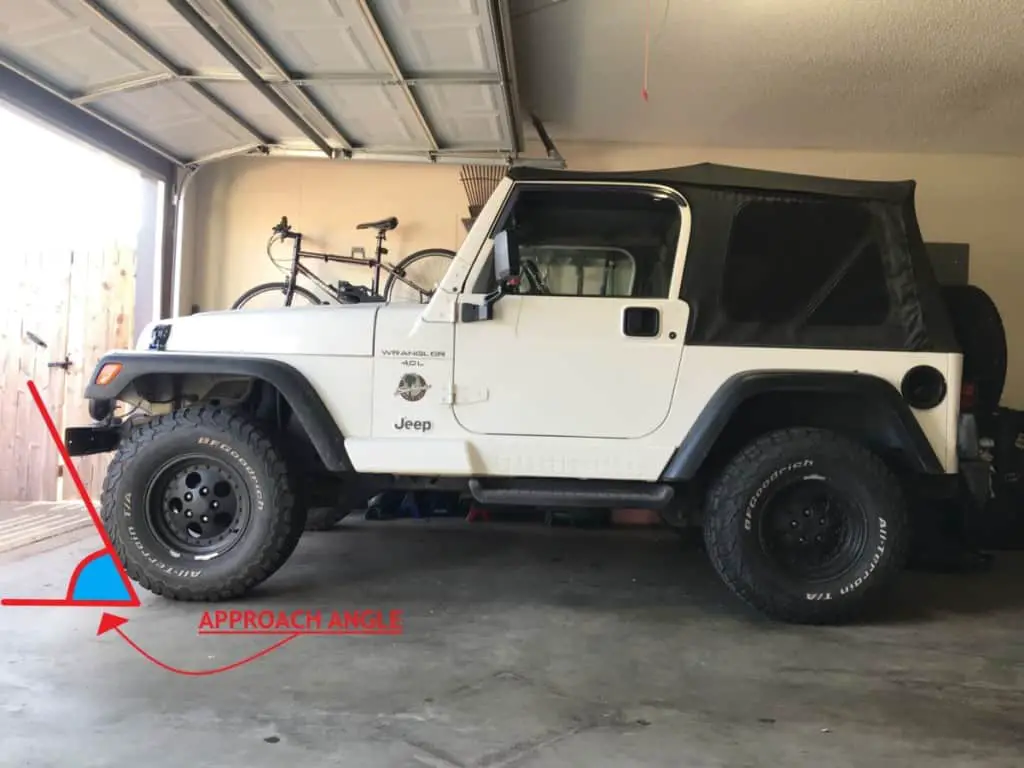
With the visual description above, it’s easier to understand the approach angle and it should also be easier to understand why this is important in off-roading.
If you have a poor approach angle, you will be very limited to the obstacles you can successfully navigate without interference.
Whatever your approach angle is, it isn’t a permanent feature of your car. What I mean is, there are several ways to increase and improve your approach angle.
Usually, bigger tires and a lower profile bumper are the easiest things you can do to improve this feature. Some people go as far as stretching the front axle forward to where the tires extend past the bumper. In this case, the approach angle pretty much isn’t an issue as your tires will make the first contact no matter what.
Departure Angle
Your departure angle is pretty much the same thing as your approach but from the back of your car.
Imagine descending a steep incline or coming down off a big rock. Your departure angle is the max angle from the bottom of your rear tire to the first point of contact on the back of your car.
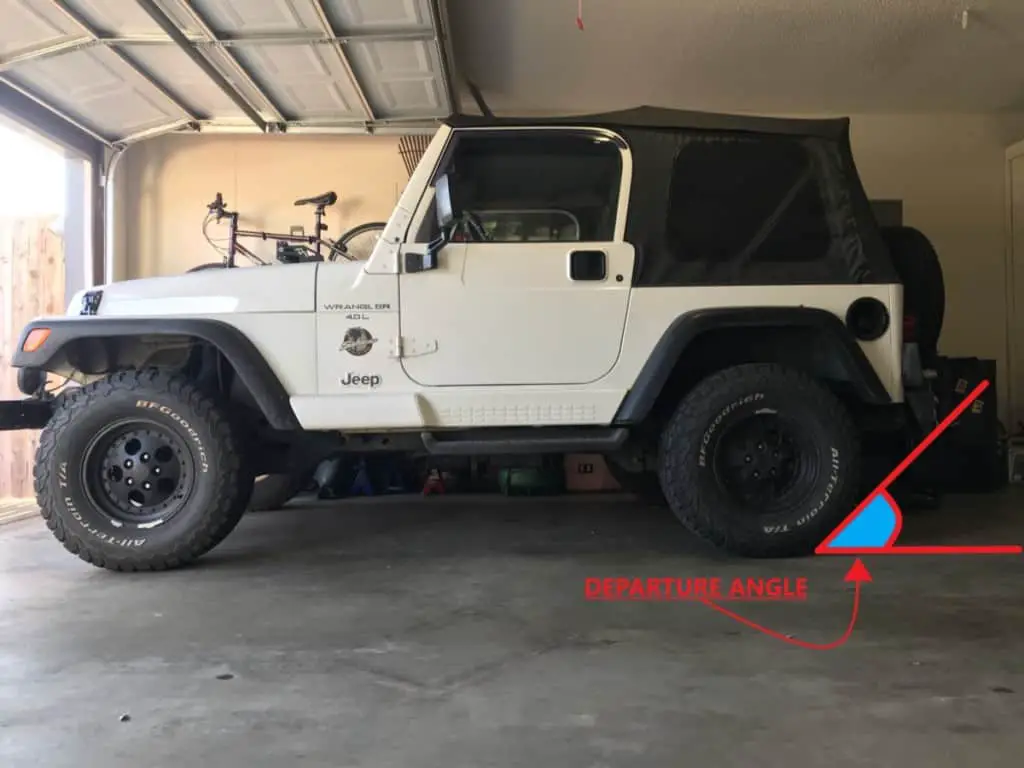
If you have a really shallow departure angle, then there is a strong chance when you drop off your obstacle, you’ll end up hitting your bumper.
Similar to the front end, increasing these angles can usually be done with bigger tires, bumpers that are low profile, and in extreme cases, pushing the rear axle back.
Don’t let these angles keep you from hitting the trails. You just to be aware of your vehicle’s unique angles and compensate with your driving style and the kinds of obstacles you tackle.
Maybe instead of driving straight down an incline, you give yourself an angled approach to the bottom so your tires have an easier time of making the first contact both front and rear.
Break Over Angle
The last angle we’ll cover here is your break over angle.
Some people are tempted to think that your break over angle is the same thing as ground clearance. While they might be similar in purpose, they are no the same.
Your break over angle is the maximum angle you can drive over without the apex of the below triangle making contact with any point of your vehicle while having at least one front and rear tire in contact with the ground.
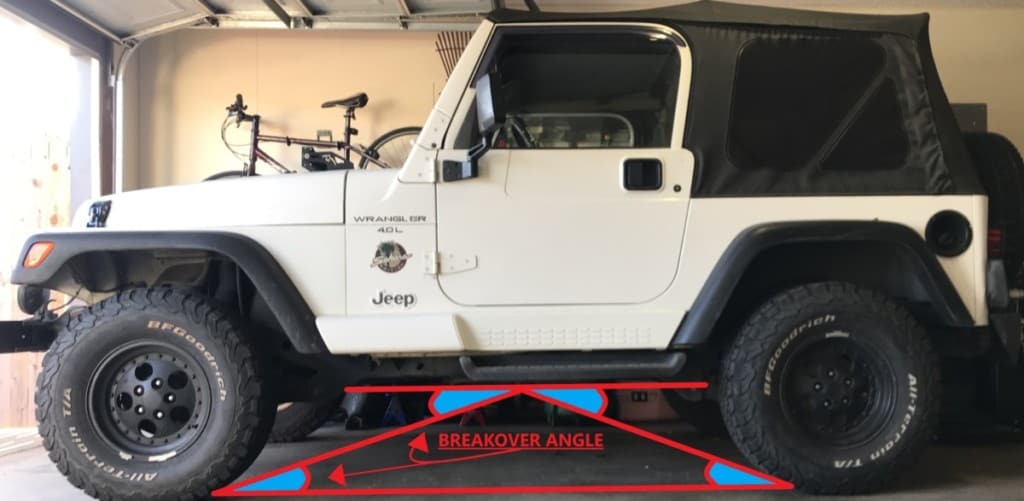
The break-over angle is something that is coveted in vehicles with shorter wheelbases. For example, the classic two-door Jeep Wrangler comes stock with a better break-over angle that the longer wheelbase four-door.
Like anything, your break over angle can be improved with a lift, “tummy tuck, and bigger tires. Unlike approach and departure angles, extending axles or lengthening your wheelbase will work negatively towards your break over angle.
These angles are as deep into academia we’ll get for now.
There are all sorts of off-road capable vehicles out there. They each having unique advantages and disadvantages. All I aim to do right now is to give you the understanding to be confident on the trails.
By understanding the components and angles we’ve covered so far, you are prepared with the proper knowledge to be successful.
Off-roading doesn’t require crazy upgrades and tons of money as much as it requires knowledgable drivers and operators.
Driving Basics
Below I am going to lay out the basics in driving off-road. Depending on your terrain and setup, you’ll need to be aware of how to tackle that specific situation. The way you handle your vehicle varies greatly in every situation.
Check out these eight steps to driving off-road:
- Have a Plan and Follow Through
- Like we mentioned very first in this post, planning is everything.
- Take the time to make a mental plan for every obstacle. Plan out how the vehicle will respond and prepare yourself for it.
- Stick to your plan. Don’t guess as you go. Find your plan and follow through.
- Walk the Trail
- If you’re with a group, listen to the spotters as they can see the trail
- Before setting your vehicle on the route, walk it yourself. This gives you a great perspective as to what things lie ahead.
- When you are driving uphill, sometimes you see nothing but sky. If you have walked the trail, you’ll know what is in front of you when you can’t always see it.
- Different Terrain Means Different Tactics
- Sand
- Use momentum and faster wheel speed
- Avoid braking till you reach the crest
- Turn at top of the crest to see your descent first
- Rock
- Low and slow. Use easy and steady throttle throughout
- Lockers usually engaged during ascent
- Left foot braking while moving up. Your brake only engaged about 5% (100% is full stop)
- Snow
- Lots of sliding, avoid sudden movements
- Go on and off the throttle, not the brakes
- Lockers are tricky in snow and can cause crab walking (side to side movement)
- Sand
- Always Have An Out
- If things get hazy or precarious, you need to have an out
- Know your escape route and what you’ll need to get there safely
- Roll Through It
- Whether it’s a sudden drop or your vehicle starts to slide, learn to roll through and let your vehicle momentum carry you
- Don’t use your breaks, this will change your weight displacement and can cause further damage to your situation
- Even though it seems counter-intuitive, let your vehicle roll through these situations slowly and just keep your front end pointed downhill
- Watch for Drops
- Especially when going downhill, watch for sudden drops
- Know how different drops will direct your vehicle and how you’ll combat that
- Keep It Low
- Keep your rig in a low gear, especially when heading downhill
- This saves your brakes and also encourages you not to use them
- Change Your Gears
- keeping with “low and slow” make sure to shift into 4WD at the trailhead
- Don’t wait till you need 4WD to shift into it
- Most the time 4WD Low is the gear you want to be in once you hit the trail
Have a Spotter
Whether it’s someone riding along with you in your vehicle or another rig out on the trails with you, you should have some kind of spotter.
In all reality, off-roading shouldn’t be done alone. Even with all the proper safety techniques and tools and emergency kits, the truth is that is always better to have someone with you out in the wilderness.
A spotter is someone who is outside of the vehicle watching and guiding in you in the right direction as you cross over certain obstacles.
Obviously, if you are just driving down a dirt road you don’t need to have someone guiding.
But when you begin climbing over rocks or flexing your suspension significantly, a spotter can be the difference in you driving your rig home or having it towed.
Beyond the safety of your rig, a spotter can save your own life or prevent you from getting hurt.
Sometimes, a spotter is the only one who can see whether a rock is going to slide or see your tires aren’t in safe spots. You’d be surprised the things a stock Jeep can do with the proper person guiding you in the right direction.
Everyone might have their own unique and individual rig and off-road vehicle, but off-roading really does qualify as a team sport.
If you choose for some reason to not have a spotter or someone with you, it falls on your shoulders to get out and repeatedly check your driving lines (trust me it is a pain hopping in and out of your vehicle on the trail).
If you aren’t aware and careful you can bring your differential cover or oil pan or any number of things smashing down on a rock.
Let the Air Out
One of the most overlooked techniques in succeeding off-road is what’s known as “airing down”.
For those who are avid trail heros and off-road enthusiasts, airing down is second nature and not even a question. But what is airing down?
Airing down is simply decreasing the air pressure in your tires. What this does is allows for your tire to have a larger footprint and also be more pliable and able to form/fit over rocks and different obstacles.
By having a larger footprint, you are increasing your traction and overall control.
In addition to functionality, airing down allows for a much more comfortable ride off-road. A tire full of air bounces and makes the trip bumpy and hard.
When you are driving on the pavement, you want to have a good grip but you also want a small footprint. This helps reduce drag and many other things which in turn lead to things like better gas mileage and steering etc.
In the off-road world, having tires with lots of air doesn’t do anything but hold you back.
Many people even switch their wheels over to bead lock wheels which hold the tire bead (rim) to the wheel at insanely low pressures (5-8psi).
Check out our article “An Expert Guide to Choosing Wheels and Tires” to get a solid understanding of how bead locks work!
Beadlocks are a wonderful safety feature and a great way to ensure you don’t lose a bead on the trail but many people don’t realize you can still go down to 10-15 psi on normal rims without much issue.
As always, consider how much weight you are carrying and take time to review your tire and rim setup and see what experiences people have.
To understand the comfort and enjoyability of airing down, I encourage you to go to try out both scenarios and see for yourself.
While airing down is great for off-road, it’s not an ideal on-road setup. When you are done on the trails, if you don’t have a way of airing up immediately, make sure to get your tires back to on-road pressure as soon as you can.
Necessary Tools and Gear
Here I’m going to keep it simple. If you are off-roading there are some basic things you should always have with you. Here’s my list of 5 absolute essentials to have on the trail.
For a more complete list of tools, gear, and recommendations for off-roading, head over to our article “10 Essentials Every Jeep Owner Should Have”!
Five Must-Haves When Heading Off-Road:
These are the bare essentials in my opinion. This should not be all you have by any means. Again, I recommend you head here to get a more complete list and understanding.
Safe Mindset
The last thing to know when driving off-road is safety.
Any amazing experience can be ruined by just one person not being safe and something terrible happening.
When you are crawling a multi-ton rig over rocks, loose gravel, sliding sand, slick ice, and so much more, there are countless opportunities for something bad to happen.
Remember, your actions don’t only affect you. Be responsible and believe it or not, it will be more fun.
Being safe doesn’t mean you’ll be bored or miss out on any of the fun. Trust me, you’ll get plenty of a rush driving switchbacks down a mountain with your tire right on the edge.
Safety just means you have the best chance to make it home safe so you can do it all again.
Let’s Wrap Up
If you have made it this far and really read through this article, you should be prepared to start your new addiction to off-roading.
In the off-road world, so much is learned through doing. It is hard to really give you experience or real-world knowledge in an article.
What you have to do now is take what you read, hit the trails, and get some mud/dirt/snow/sand on your wheels and feels things out yourself. You’ll pick it up in no time.
We hope to see you on the trails enjoying the outdoors and remember to always keep The Wilderness on YOUR Side!

